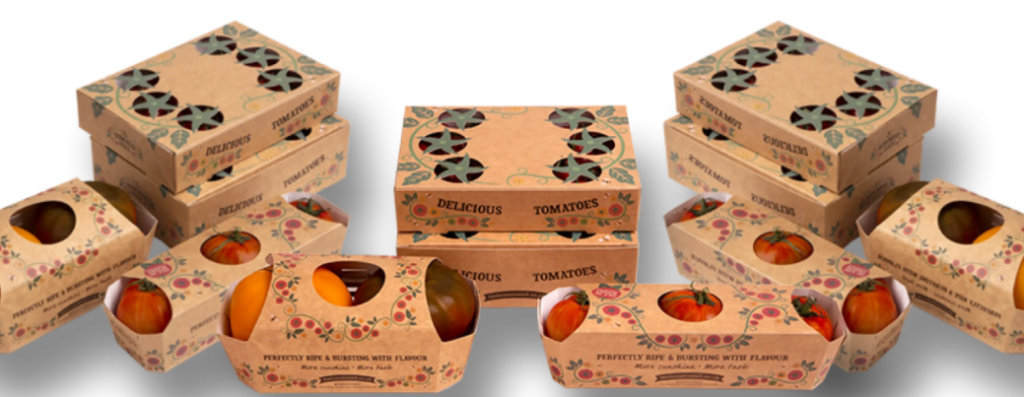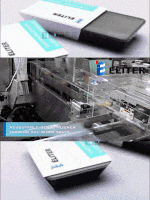How Paperboard Packaging is Improving Sustainability and Recyclability?
2023-04-10
Paperboard packaging is widely used for consumer product packaging. It is made from renewable materials such as wood pulp, making it an eco-friendly option compared to other types of packaging. This paperboard is lightweight, strong, and versatile, making it ideal for a variety of products such as food, electronics, and personal care items. In this article, we will discuss how paperboard packaging improves sustainability and recyclability.

In this article, we will look into how packaging in the world of food and beverage is heading for a more sustainable future.
What is Paperboard Packaging?
Paperboard packaging refers to a type of packaging made from low-density paper pulp. It is commonly used in the food and beverage industry as well as in the pharmaceutical industry. Paperboard packaging can be customized to meet specific requirements and can be coated with various materials to make it waterproof, grease-resistant, or heat-sealable.
How is Paperboard Packaging More Sustainable?
One of the main benefits of paperboard packaging is its sustainability. The raw material used to produce paperboard is sourced from renewable forests, which means that it is a sustainable resource. According to the Food and Agriculture Organization (FAO), forest area has increased by 7% globally since 1990, and this increase has been due to sustainable forest management practices. Furthermore, the Sustainable Forestry Initiative (SFI) ensures that forests are managed sustainably to protect biodiversity, water quality, and wildlife habitat.
In addition to using renewable resources, paperboard packaging also has a low carbon footprint. A study by the American Forest and Paper Association found that the production of paperboard generates less greenhouse gas emissions than the production of plastic, metal, or glass packaging. The study also found that paperboard is more energy-efficient to produce compared to plastic, metal, or glass packaging.
Another important aspect of paperboard packaging is its recyclability. Paperboard packaging is highly recyclable, which means that it can be reused to create new products. Recycling paperboard not only reduces waste but also saves energy and resources. According to the Environmental Protection Agency (EPA), recycling one ton of paperboard saves 3.3 cubic yards of landfill space, 17 trees, 7,000 gallons of water, and 4,000 kilowatt-hours of electricity.
Furthermore, paperboard packaging is made from fiber that can be recycled up to seven times. This means that the same piece of paperboard can be used multiple times before it needs to be replaced. The recycling process for paperboard involves shredding the material into small pieces, which are then mixed with water and chemicals to break down the fibers. The resulting pulp can then be formed into new paper products, including paperboard packaging.
To conclude the above analysis, paperboard packaging is considered more sustainable than other packaging materials for the following reasons:
- Renewable Material: Paperboard is made from trees, which are renewable resources. Forests are also managed for long-term sustainability and replanted after harvesting.
- Biodegradable: Unlike plastics, paperboard is biodegradable, which means it will break down over time and not contribute to the accumulation of waste in landfills or oceans.
- Recyclable: Paperboard is easily recyclable, and recycled paperboard can be used to make new products. Recycling also reduces the need for virgin materials, which saves energy and reduces greenhouse gas emissions.
- Low Carbon Footprint: The production of paperboard has a lower carbon footprint compared to other packaging materials like plastic or metal. According to Greenpeace, paper-based packaging generates 22% less CO2 emissions than plastic-based packaging. Additionally, using paper-based packaging can help reduce the overall carbon footprint of a product by reducing the weight of the packaging during transportation.
Innovation in Paperboard Packaging
To further improve the sustainability and recyclability of paperboard packaging, there has been a lot of innovation in this industry in recent years. For example, some companies are now producing paperboard packaging with a higher percentage of post-consumer recycled content. This means that the paperboard is made from materials that have already been used by consumers and then recycled.
How is Paperboard Packaging Improving Recallability?
Recyclability is the ability to quickly identify and remove products from the market that are potentially dangerous or defective. Paperboard packaging can help improve recallability in several ways:
- Tamper-Evident Packaging: Paperboard packaging can be designed to have tamper-evident features that make it clear if the product has been opened or tampered with.
- Easy-to-Read Labels: Information on paperboard packaging can be printed in high-resolution, making it easy to read and understand. This can help consumers quickly identify products that have been recalled due to safety concerns.
- Barcode Scanning: Paperboard packaging can be designed to include barcodes or QR codes that can be scanned at the point of sale or during distribution. This can help manufacturers quickly track and locate products in the event of a recall.
- Traceability: Paperboard packaging can be printed with unique identifiers, such as serial numbers or batch codes, that can be used to trace products throughout the supply chain.
Examples of Paperboard Packaging Improving Sustainability and Recyclability are as follows:
Tetra Pak
Tetra Pak is a leading manufacturer of paper-based packaging for food and beverage products. Their packaging is made from renewable materials and is fully recyclable. The company also offers a range of tamper-evident and security features to improve recyclability, including holographic labels and specialized closures that prevent tampering.
Amcor
Amcor is a global leader in developing sustainable packaging solutions. They offer a range of paper-based packaging options that are 100% recyclable and made from responsibly sourced materials. Amcor’s paper-based packaging also includes features like barcode scanning and traceability to improve recyclability.
Nestle
Nestle, one of the world’s largest food and beverage companies, has committed to using 100% recyclable or reusable packaging by 2025. As part of this commitment, the company has developed a range of paper-based packaging options that are both sustainable and functional. Nestle’s paper-based packaging includes features like tamper-evident closures and high-resolution printing to improve recyclability.
Another innovation in paperboard packaging is the use of biodegradable coatings. These coatings help to protect the paperboard from moisture and other environmental factors while also allowing it to break down more easily in the environment. Biodegradable coatings can be made from materials such as starch, cellulose, or polylactic acid (PLA).
Conclusion
In conclusion, paperboard packaging offers many benefits for sustainability and recyclability. It is made from renewable resources, has a low carbon footprint, and is highly recyclable. Furthermore, innovations in paperboard packaging are making it even more eco-friendly by increasing post-consumer recycled content and using biodegradable coatings. As consumers become more environmentally conscious, paperboard packaging will continue to be an important option for sustainable and recyclable packaging.




